MMOB ransomware virus aims to encrypt all of your personal files
Contents
MMOB ransomware is a malicious computer program that is a variant of the infamous STOP/DJVU virus. The primary target of this malware is to encrypt all files on the vulnerable system and demand a ransom payment from its user. During the attack, the ransomware appends each encrypted file with an additional .mmob extension. To illustrate, a file originally named 1.jpg will be renamed to 1.jpg.mmob, 2.txt to 2.txt.mmob and so on.
To clarify the intentions of the ransomware operators for the victim, the virus drops a ransom note dubbed _readme.txt in every folder that contains at least one encrypted file. This note delivers a message from the threat actors who explain that all of victim’s computer-stored data (images, videos, documents, archives and other important files) were encrypted with the strongest encryption and unique key. They also suggest that the only way to recover files is to pay a ransom for the cybercriminals, or, as they put it, purchase MMOB decryption software and key from them.
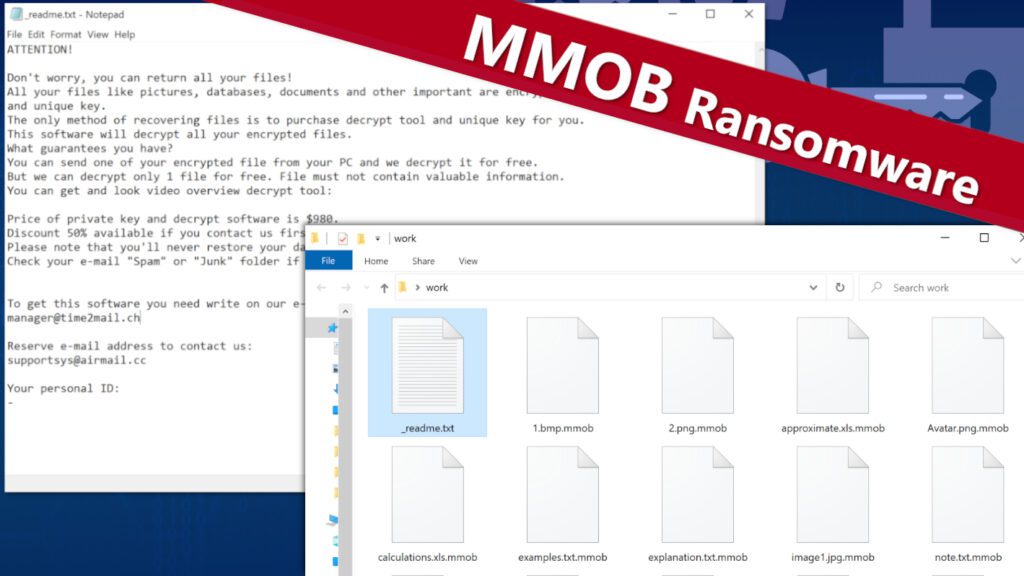
Ransom note introduces pricing terms for the decryption tool
The ransom note begins with a line that assures that the victim can return all files. Next, it clarifies what kind of data was encrypted during the cyberattack. Then it continues to explain that the only solution leading to data recovery is paying a ransom to cybercriminals, and the price of it depends on how quickly the victim writes to the cybercriminals via provided email addresses – manager@time2mail.ch and supportsys@airmail.cc.
The note suggests that the initial price of data decryption tools is $980. However, if the victim rushes to contact the criminals within 72 hours starting from the infection timestamp, the crooks promise a 50% discount, which sets the decryption price to $490. In situations where victims delay this procedure any longer, the crooks will demand $980. In both cases, the only payment method they accept is via cryptocurrency in order to remain anonymous and untraceable.
An example of recently discovered _readme.txt ransom note sample is shown below.
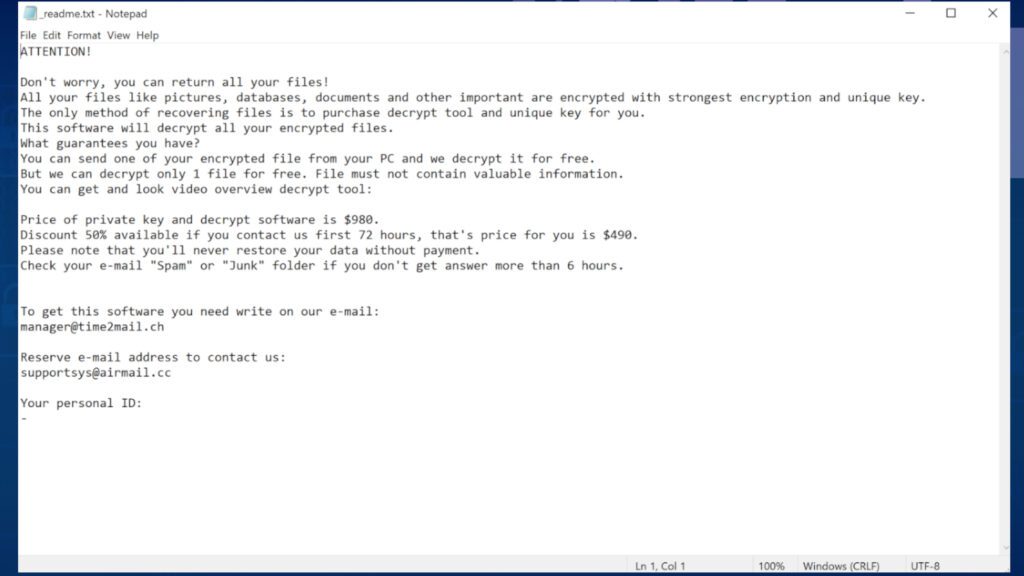
If you’re thinking of how to respond to this ransomware attack, we’d like to remind you that paying a ransom should NOT be an option. Please inspect the official FBI recommendations regarding ransom payments. You should know that paying money to cybercriminals not only doesn’t guarantee data recovery, but also helps the crooks identify you as a potential victim in future attacks. Moreover, collecting money from ransomware victims helps the crooks expand their team, develop more malware and therefore infect even more people.
The ransomware damage
Data encryption seems to be only part of the damage that MMOB virus inflicts on the compromised computer systems. On top of that, it drops and executes an additional Trojan, typically VIDAR or AZORULT. These are well-known pieces of malware that fall into Remote Access Trojans (RATs) category. In general, cybercriminals can use them to remotely connect to infected machines, steal various login credentials, banking information, cryptocurrency wallets, browsing history and more. Such information can come in handy for cybercriminals when blackmailing computer users.
In addition, MMOB ransomware increases the scope of damage to the computer by deleting Volume Shadow Copies that are typically useful when restoring lost/damaged files on a computer. Furthermore, the virus edits Windows HOSTS file only to block a set of URLs on compromised computer so that the computer user could not access them online. In general, the blocked websites publish various cybersecurity-related content, so it is easy to assume that the crooks do not want the computer user to find help online after a ransomware attack.
All things considered, we strongly recommend that you remove MMOB ransomware virus remains and other malware from your Windows computer ASAP. The best approach to this is to boot your PC in Safe Mode with Networking and then run a genuine antivirus software to fully scan your PC. Afterward, we advise you to download RESTORO that is trusted by many computer users worldwide. It is a good tool when it comes to repairing virus damage caused to Windows OS files.
Ransomware Summary
| Name | MMOB Ransomware Virus |
| Type | Ransomware; Crypto-malware; Virtual Extortion Virus |
| Family | STOP/DJVU |
| Encryption type | RSA 2048 + Salsa20 |
| Previous versions | JYPO, KIFR, KIOP, KITZ, BOZA, BOTY, COZA (find full list here) |
| Version | 468th |
| Extension | .mmob |
| Cybercriminal emails | manager@time2mail.ch and supportsys@airmail.cc |
| Additional malware dropped | Azorult or Vidar Trojan |
| Damage | The ransomware uses encryption to maliciously modify all files on the PC and marks their original names with .mmob extension. Ransom notes called as _readme.txt will be dropped in every computer folder. This piece of malware usually drags VIDAR Stealer alongside it and also eliminates VSS from the system. On top of that, it tends to modify Windows HOSTS file to restrict computer user’s access to cybersecurity-related websites online. |
| Ransom note | _readme.txt |
| Ransom demand | $490-$980 in Bitcoin |
| Distribution | Victims often download this ransomware along illegal torrent downloads, cracked software, activators, key generators or tools like KMSPico. |
| Known software cracks to contain this malware | Corel Draw, Tenorshare 4ukey, Adobe Photoshop, Cubase, Adobe Illustrator, Internet Download Manager, Tally, League of Legends. |
| Detection names | Ransom:Win32/StopCrypt.PAL!MTB (Microsoft), Trojan.Crypt (A) (Emsisoft), HEUR:Trojan-Ransom.Win32.Stop.gen (Kaspersky), Trojan.GenericKD.47850419 (BitDefender), Trojan.MalPack.GS (Malwarebytes), ML.Attribute.HighConfidence (Symantec) see all detection name variations on VirusTotal |
| Removal | Remove ransomware and related malware from your PC using trustworthy software. To repair virus damage on Windows OS files, consider scanning with RESTORO (secure download link). |
REPAIR VIRUS DAMAGE
Scan your system for FREE to detect security, hardware and stability issues. You can use the scan results and try to remove threats manually, or you can choose to get the full version of software to fix detected issues and repair virus damage to Windows OS system files automatically. Includes Avira spyware/malware detection & removal engine.
See a screenshot of data folder containing files encrypted by this ransomware.
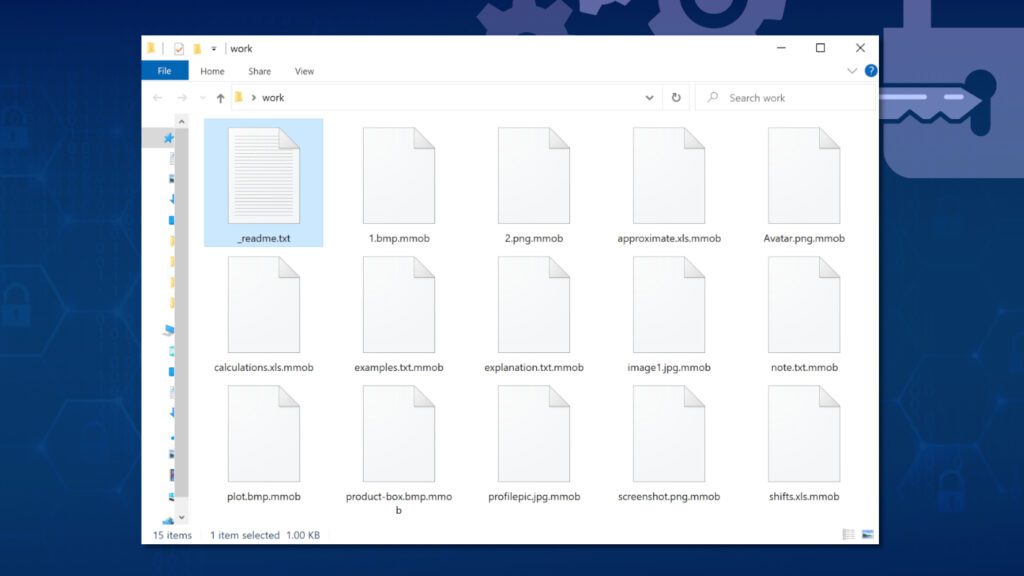
Ransomware distribution strategies you should know
Ransomware-type computer viruses are usually distributed by deceit, often disguising the malicious file as something else or bundling it with another file. Most of the time, STOP/DJVU variants like MMOB virus hide in illegal downloads, specifically pirated software versions.
Computer users who have the bad habit of trying to bypass legitimate license key fees stumble upon these downloads when visiting various warez sites or torrent listings. However, most of the time, cybercriminals only use popular software names like Adobe Photoshop/Illustrator, Autocad and others only as a clickbait, while the installer inside of the download is nothing else but the executable of the ransomware. In other words, these malicious downloads do not contain anything related to the advertised software but malware only.
We recommend you to avoid taking such measures to activate desired software and instead support legitimate software developers instead. After all, it is not worth taking the risk of losing all of your files, besides, the damages inflicted by malware will result in much higher expenses than a legitimate license key costs.
Ransomware-type viruses are also frequently distributed via malicious email spam in a form of malformed attachments. The crooks tend to spread malicious documents (DOCX, PDF, XLS) or JS files named as regular files used in daily business communications (for example, invoices, order summaries, payment details, etc.). After opening such attachment, the malicious script inside of it activates to download and run the payload on the computer.
We advise computer users to stay away from emails that were unexpected, especially those that urge you to open attached documents. Moreover, try to identify suspicious details such as unfamiliar greeting line, typo mistakes, weirdly placed logos, or spoofed email address that reveal the true intentions of the email sender.
Finally, STOP/DJVU ransomware victims should avoid rogue websites trying to lure potential victims with fake data decryption tools. The cybercriminals often tend to target ransomware victims only to deliver a secondary payload which encrypts files for the second time. If you’re interested in currently available data decryption/repair tools for files affected by STOP/DJVU, you should know that they are developed by Emsisoft and DiskTuna and only work under certain conditions.
Remove MMOB Ransomware Virus and Decrypt or Recover Your Files
Please find the provided guide on how to remove MMOB ransomware virus safely below. You should use a genuine antivirus solution to perform a full system scan after booting your PC in Safe Mode with Networking. In addition, consider downloading RESTORO to repair virus damage on Windows OS files (such as modified Windows HOSTS file).
You can find MMOB virus removal instructions here.
OUR GEEKS RECOMMEND
Our team recommends a two-step rescue plan to remove ransomware and other remaining malware from your computer, plus repair caused virus damage to the system:
GeeksAdvice.com editors select recommended products based on their effectiveness. We may earn a commission from affiliate links, at no additional cost to you. Learn more.
MMOB Ransomware Virus Removal Guidelines
Method 1. Enter Safe Mode with Networking
Step 1. Start Windows in Safe Mode with Networking
Before you try to remove MMOB Ransomware Virus virus, you must start your computer in Safe Mode with Networking. Below, we provide the easiest ways to boot PC in the said mode, but you can find additional ones in this in-depth tutorial on our website – How to Start Windows in Safe Mode. Also, if you prefer a video version of the tutorial, check our guide How to Start Windows in Safe Mode on Youtube.
Instructions for Windows XP/Vista/7 users
- First of all, turn off your PC. Then press the Power button to start it again and instantly start pressing F8 button on your keyboard repeatedly in 1-second intervals. This launches the Advanced Boot Options menu.
- Use arrow keys on the keyboard to navigate down to Safe Mode with Networking option and press Enter.
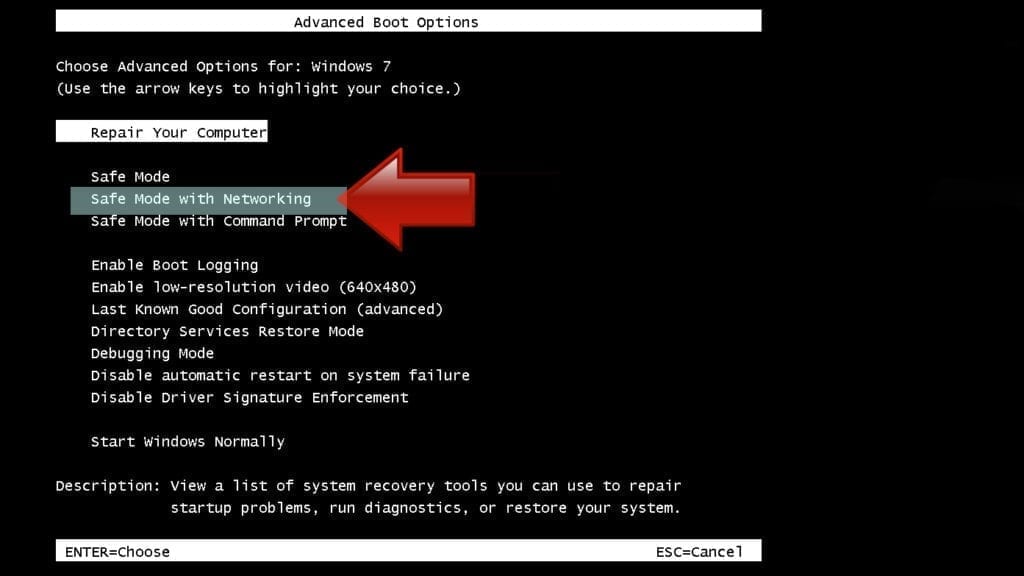
Instructions for Windows 8/8.1/10/11 users
- Open Windows Start menu, then press down the Power button. On your keyboard, press down and hold the Shift key, and then select Restart option.
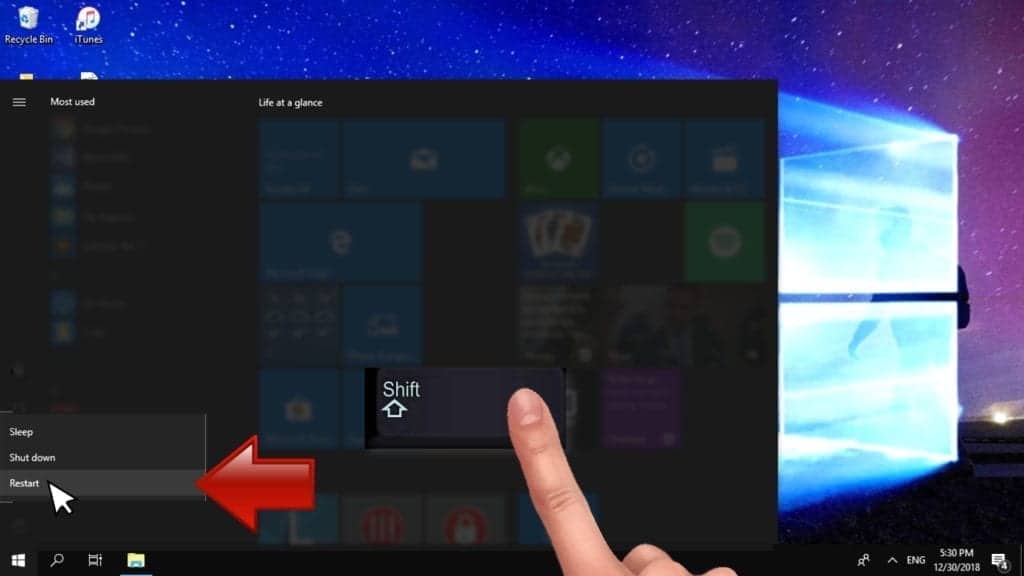
- This will take you to Windows Troubleshoot screen. Choose Troubleshoot > Advanced Options > Startup Settings > Restart. Tip: If you can't find Startup Settings, click See more recovery options.
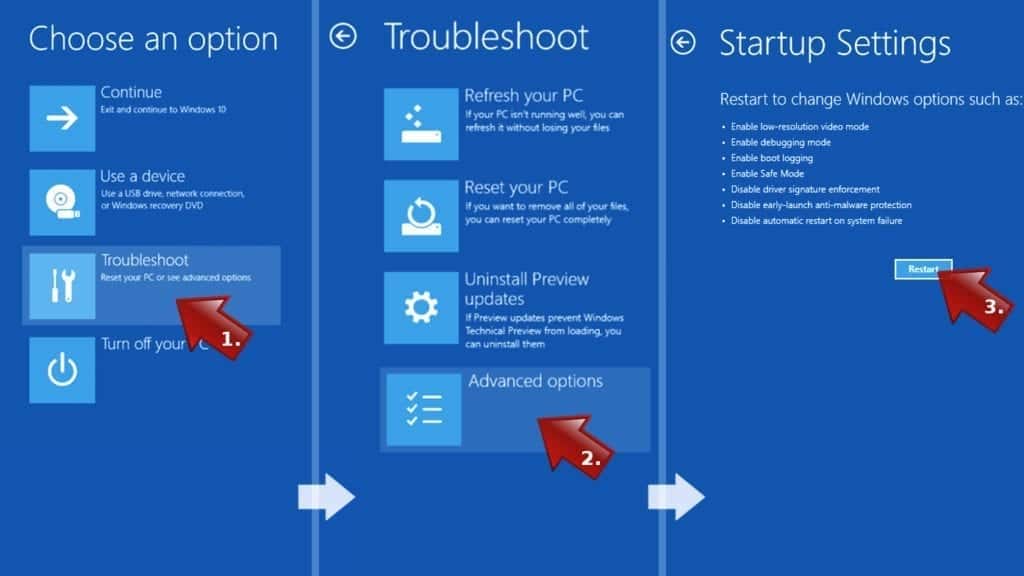
- In Startup Settings, press the right key between F1-F9 to enter Safe Mode with Networking. In this case, it is the F5 key.
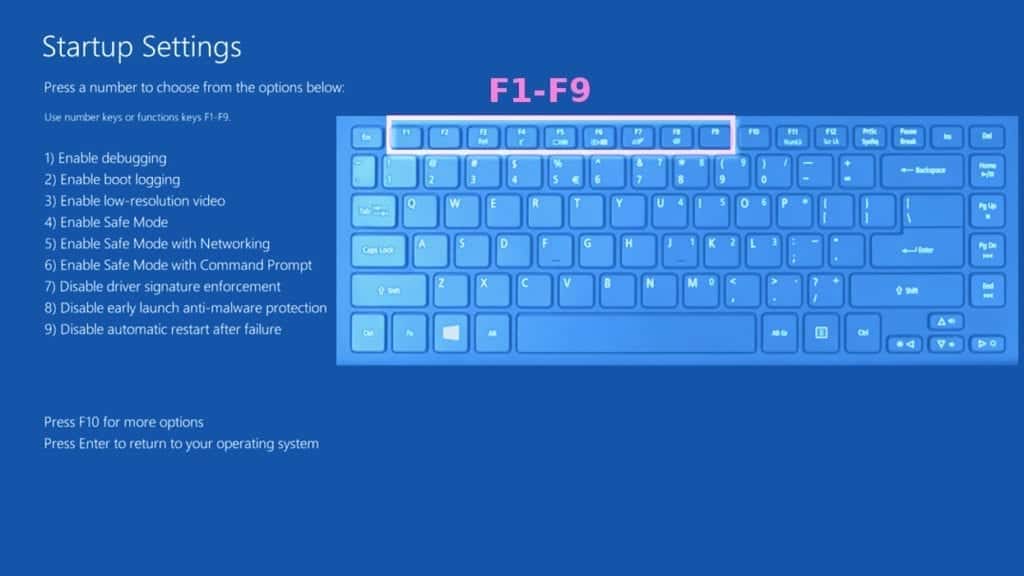
Step 2. Remove files associated with the virus
Now, you can search for and remove MMOB Ransomware Virus files. It is very hard to identify files and registry keys that belong to the ransomware virus, Besides, malware creators tend to rename and change them repeatedly. Therefore, the easiest way to uninstall such type of a computer virus is to use a reliable security program such as INTEGO Antivirus. For virus damage repair, consider using RESTORO.
Special Offer
Compatibility: Microsoft Windows
See Full Review
RESTORO is a unique PC Repair Tool which comes with an in-built Avira scan engine to detect and remove spyware/malware threats and uses a patented technology to repair virus damage. The software can repair damaged, missing or malfunctioning Windows OS files, corrupted DLLs, and more. The free version offers a scan that detects issues. To fix them, license key for the full software version must be purchased.
Method 2. Use System Restore
In order to use System Restore, you must have a system restore point, created either manually or automatically.
Step 1. Boot Windows in Safe Mode with Command Prompt
Instructions for Windows XP/Vista/7 users
- Shut down your PC. Start it again by pressing the Power button and instantly start pressing F8 button on your keyboard repeatedly in 1-second intervals. You will see Advanced Boot Options menu.
- Using arrow keys on the keyboard, navigate down to Safe Mode with Command Prompt option and press Enter.
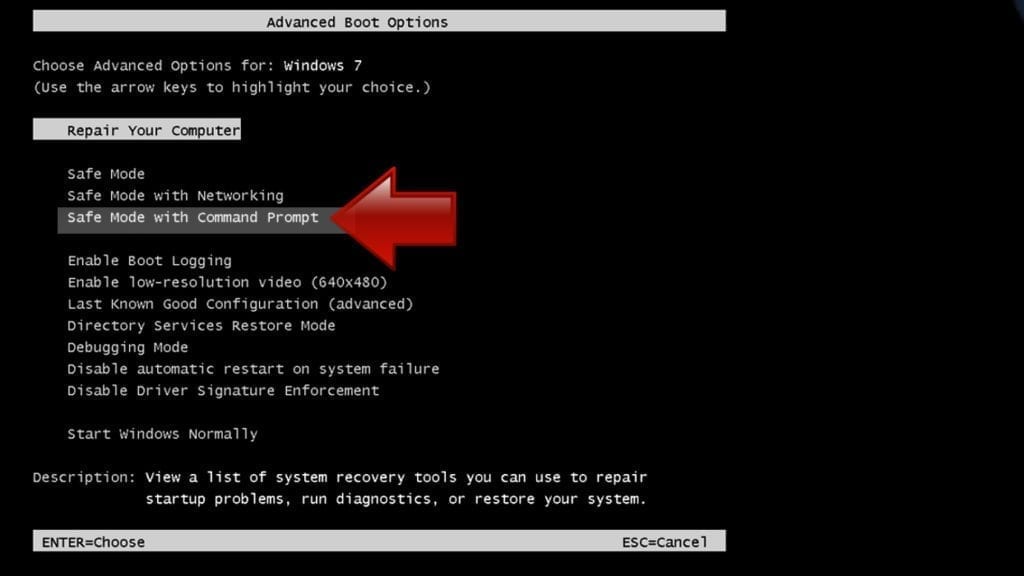
Instructions for Windows 8/8.1/10/11 users
- Launch Windows Start menu, then click the Power button. On your keyboard, press down and hold the Shift key, and then choose Restart option with the mouse cursor.

- This will take you to Windows Troubleshoot screen. Choose Troubleshoot > Advanced Options > Startup Settings > Restart. Tip: If you can't find Startup Settings, click See more recovery options.

- In Startup Settings, press the right key between F1-F9 to enter Safe Mode with Command Prompt. In this case, press F6 key.

Step 2. Start System Restore process
- Wait until system loads and command prompt shows up.
- Type cd restore and press Enter, then type rstrui.exe and press Enter. Or you can just type %systemroot%system32restorerstrui.exe in command prompt and hit Enter.
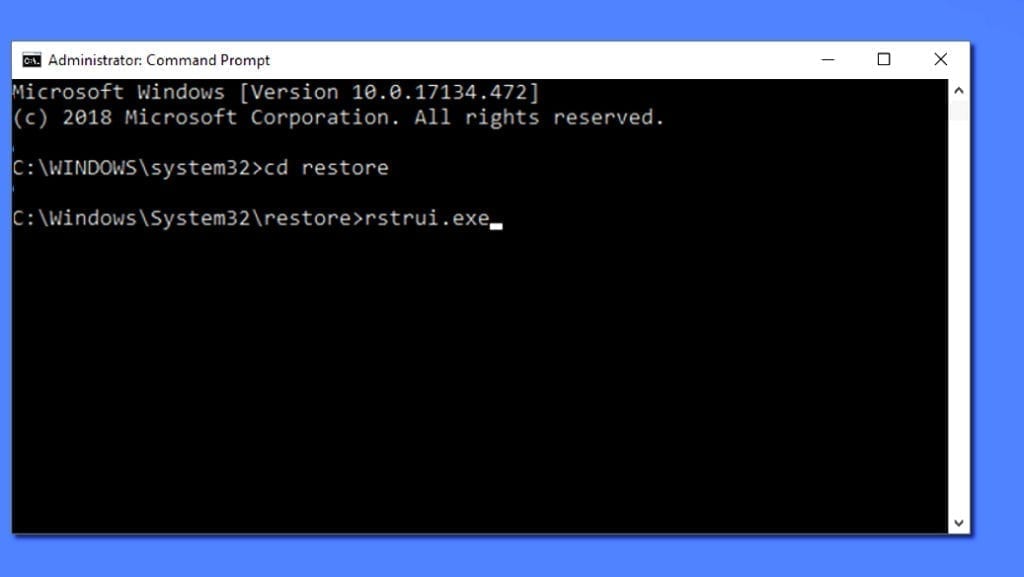
- This launches System Restore window. Click Next and then choose a System Restore point created in the past. Choose one that was created before ransomware infection.
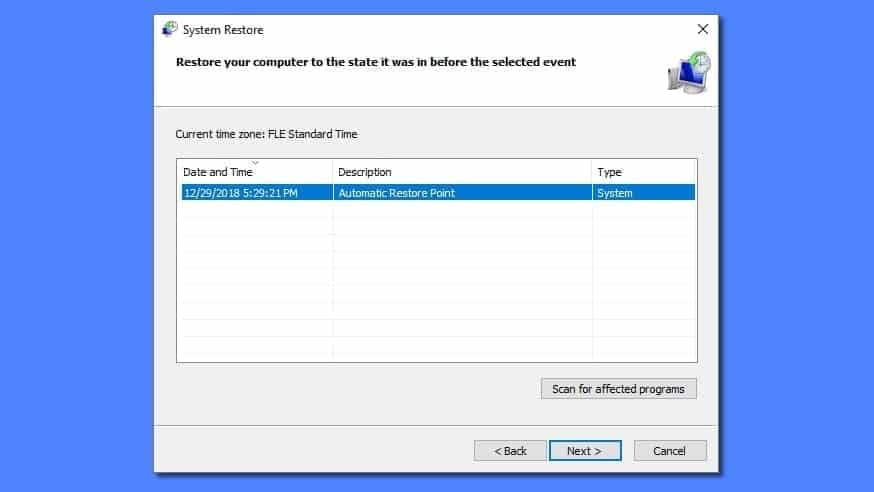
- Click Yes to begin the system restoration process.
After restoring the system, we recommend scanning the system with antivirus or anti-malware software. In most cases, there won't be any malware remains, but it never hurts to double-check. In addition, we highly recommend checking ransomware prevention guidelines provided by our experts in order to protect your PC against similar viruses in the future.
Alternative software recommendations
Malwarebytes Anti-Malware
Removing spyware and malware is one step towards cybersecurity. To protect yourself against ever-evolving threats, we strongly recommend purchasing a Premium version of Malwarebytes Anti-Malware, which provides security based on artificial intelligence and machine learning. Includes ransomware protection. See pricing options and protect yourself now.
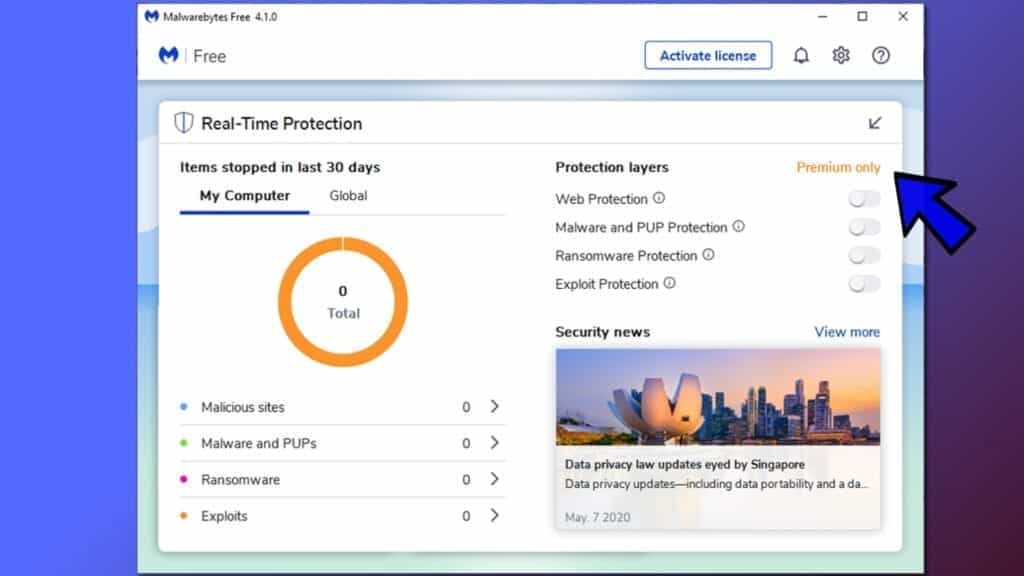
System Mechanic Ultimate Defense
If you're looking for an all-in-one system maintenance suite that has 7 core components providing powerful real-time protection, on-demand malware removal, system optimization, data recovery, password manager, online privacy protection and secure driver wiping technology. Therefore, due to its wide-range of capabilities, System Mechanic Ultimate Defense deserves Geek's Advice approval. Get it now for 50% off. You may also be interested in its full review.
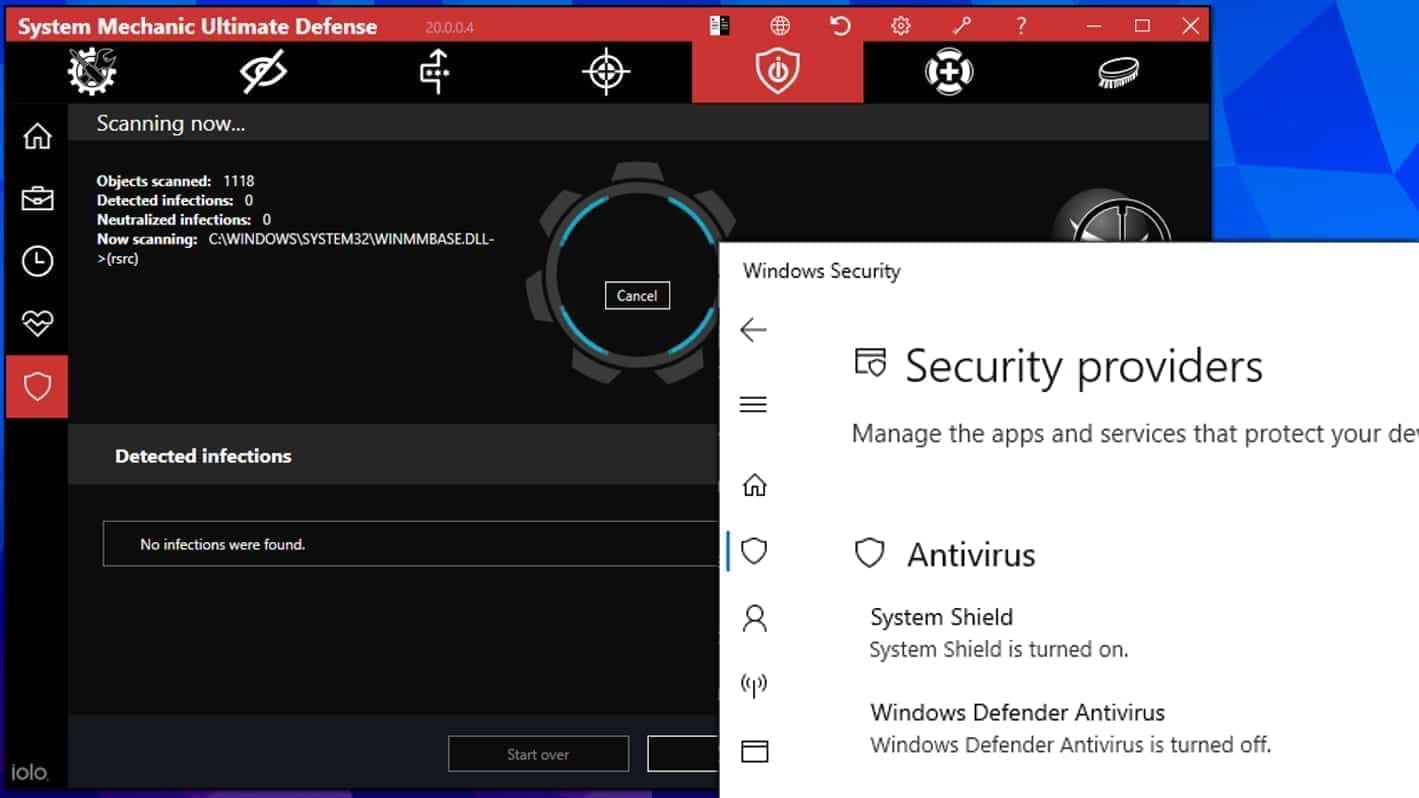
Disclaimer. This site includes affiliate links. We may earn a small commission by recommending certain products, at no additional cost for you. We only choose quality software and services to recommend.
Decrypt MMOB files
Fix and open large MMOB files easily:
It is reported that STOP/DJVU ransomware versions encrypt only the beginning 150 KB of each file to ensure that the virus manages to affect all files on the system. In some cases, the malicious program might skip some files at all. That said, we recommend testing this method on several big (>1GB) files first.
- Create a copy of encrypted file to a separate folder using Copy > Paste commands.
- Now, right-click the created copy and choose Rename. Select the MMOB extension and delete it. Press Enter to save changes.
- In the prompt asking whether you want to make the changes as file might become unusable, click OK.
- Try opening the file.
STOP/DJVU decryption tool usage guide
STOP/DJVU ransomware versions are grouped into old and new variants. MMOB Ransomware Virus is considered the new STOP/DJVU variant, just like JYPO, KIFR, KIOP, KITZ, BOZA, BOTY, COZA (find full list here). This means full data decryption is now possible only if you have been affected by offline encryption key. To decrypt your files, you will have to download Emsisoft Decryptor for STOP DJVU, a tool created and maintained by a genius security researcher Michael Gillespie.
Note! Please do not spam the security researcher with questions whether he can recover your files encrypted with online key - it is not possible.
In order to test the tool and see if it can decrypt MMOB files, follow the given tutorial.
- Download the decryption tool from Emsisoft.
- Click the little arrow next to your download and choose Show in Folder.
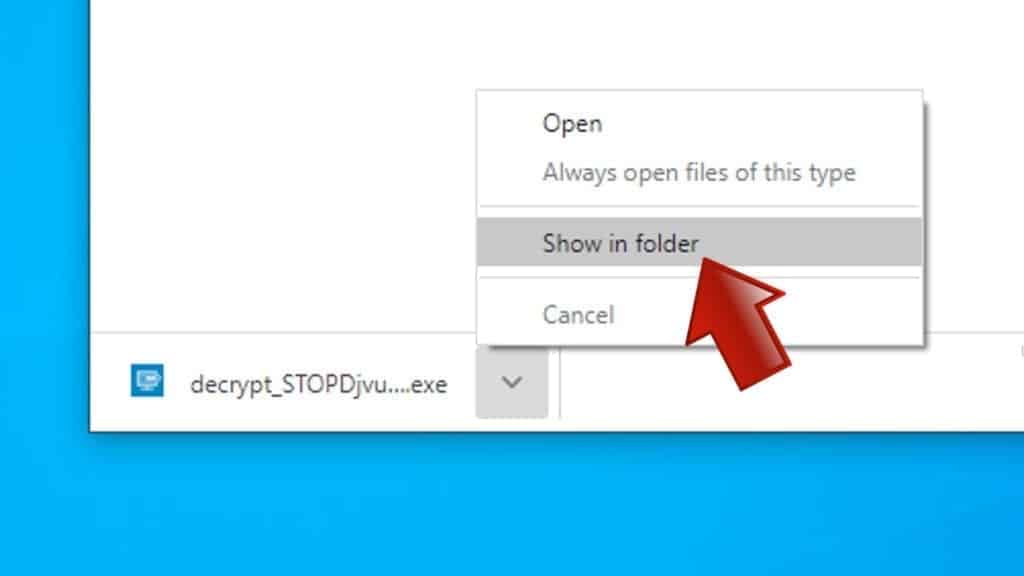
- Now, right-click the file and choose Run as Administrator. If asked, enter administrator's password.
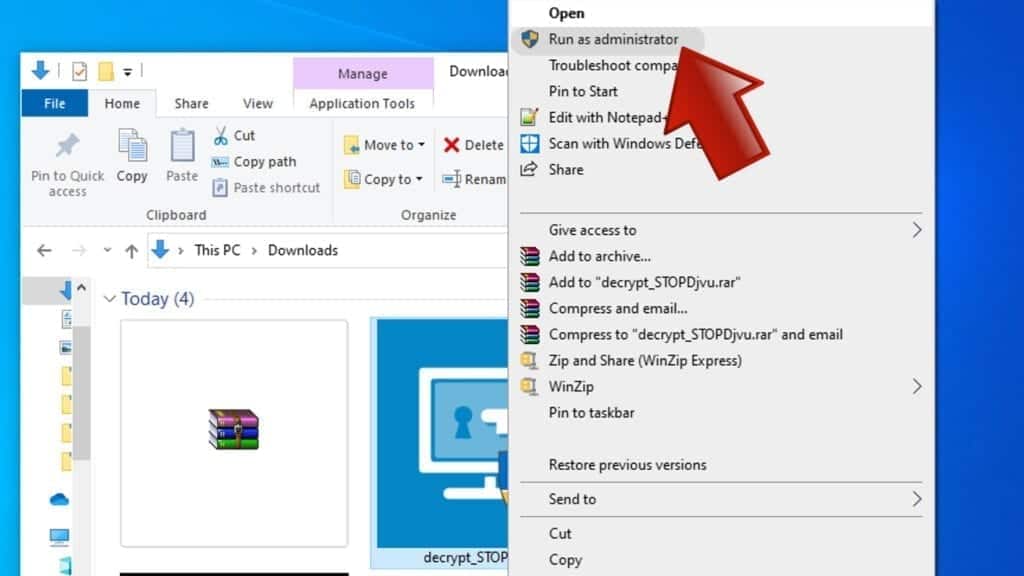
- In UAC window, click Yes.
- Click Yes to agree to software terms in both windows.
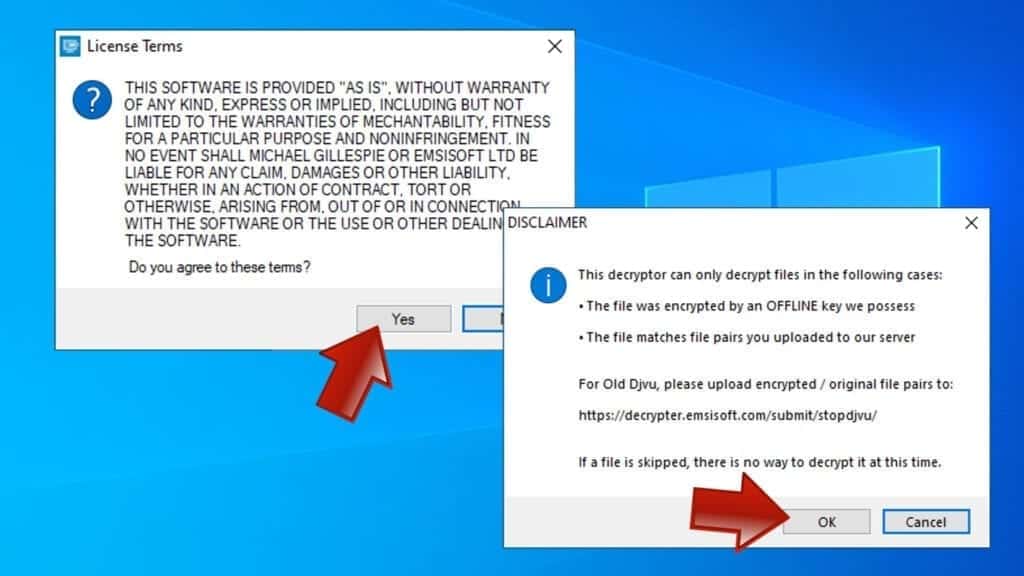
- The tool will automatically include C:// disk as a location to decrypt. The file recovery tool will prepopulate the locations to scan, including connected data storage drives or network drives. Click Add folder if you wish to add additional locations.
In Options tab, you can choose to keep encrypted file copies. We recommend leaving this option selected, especially if you do not know if the decryption tool will work.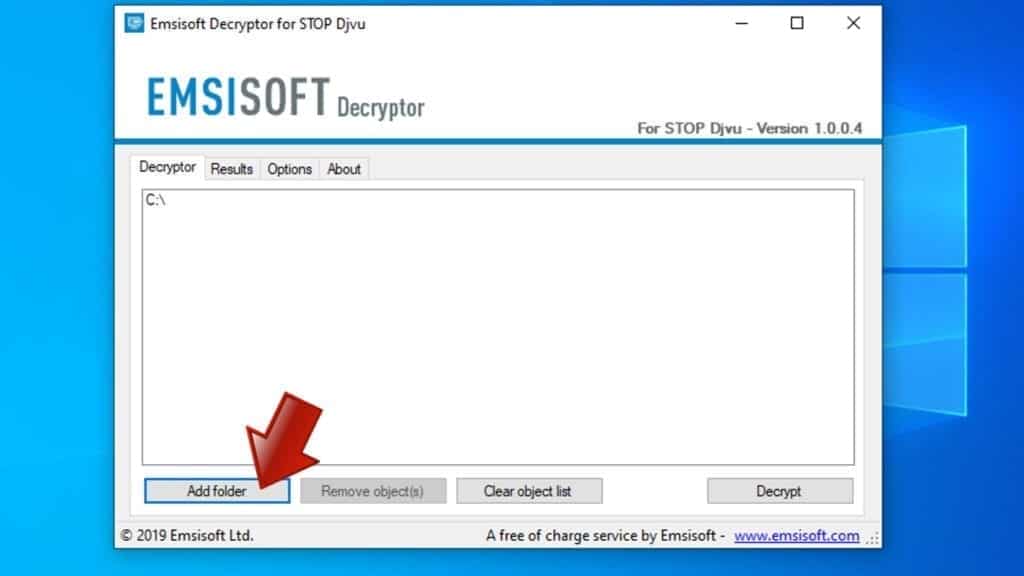
- Click Decrypt to start restoring MMOB files. You will see the progress in the Results tab. Here, you can see messages from the tool, such as whether the decryption procedure is successful, or you need to wait for an update.
You might also be informed that online key was used to encrypt your files. In such case, the decryption tool won't work for you, and the only way to recover your files is to use a data backup.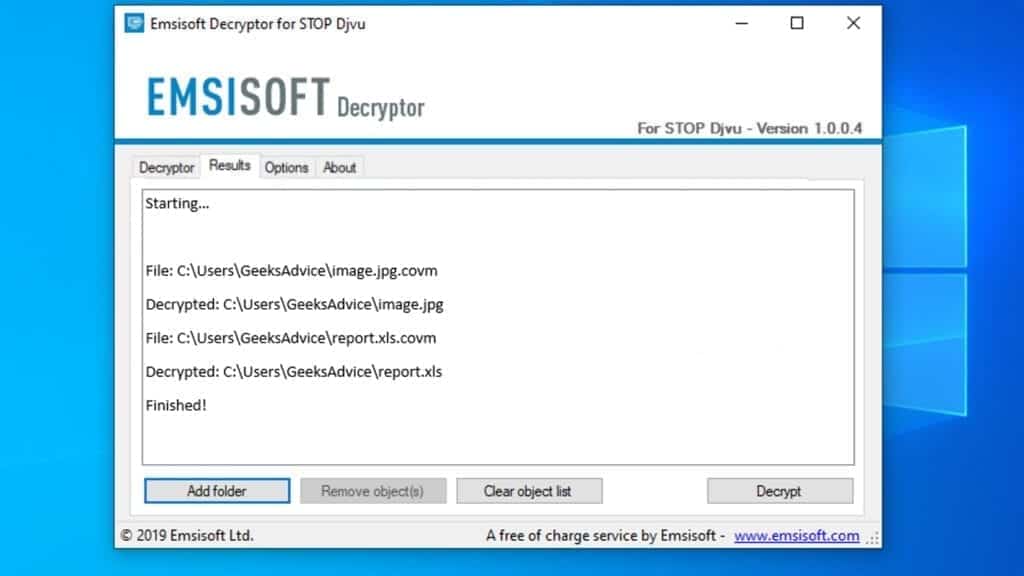
Meanings of decryptor's messages
The MMOB decryption tool might display several different messages after failed attempt to restore your files. You might receive one of the following messages:
Error: Unable to decrypt file with ID: [example ID]
This message typically means that there is no corresponding decryption key in the decryptor's database.
No key for New Variant online ID: [example ID]
Notice: this ID appears to be an online ID, decryption is impossible
This message informs that your files were encrypted with online key, meaning no one else has the same encryption/decryption key pair, therefore data recovery without paying the criminals is impossible.
Result: No key for new variant offline ID: [example ID]
This ID appears to be an offline ID. Decryption may be possible in the future.
If you were informed that an offline key was used, but files could not be restored, it means that the offline decryption key isn't available yet. However, receiving this message is extremely good news, meaning that it might be possible to restore your MMOB extension files in the future. It can take a few months until the decryption key gets found and uploaded to the decryptor. We recommend you to follow updates regarding the decryptable DJVU versions here. We strongly recommend backing up your encrypted data and waiting.
Report Internet crime to legal departments
Victims of MMOB Ransomware Virus should report the Internet crime incident to the official government fraud and scam website according to their country:
- In the United States, go to the On Guard Online website.
- In Australia, go to the SCAMwatch website.
- In Germany, go to the Bundesamt für Sicherheit in der Informationstechnik website.
- In Ireland, go to the An Garda Síochána website.
- In New Zealand, go to the Consumer Affairs Scams website.
- In the United Kingdom, go to the Action Fraud website.
- In Canada, go to the Canadian Anti-Fraud Centre.
- In India, go to Indian National Cybercrime Reporting Portal.
- In France, go to the Agence nationale de la sécurité des systèmes d’information.
If you can't find an authority corresponding to your location on this list, we recommend using any search engine to look up "[your country name] report cyber crime". This should lead you to the right authority website. We also recommend staying away from third-party crime report services that are often paid. It costs nothing to report Internet crime to official authorities.
Another recommendation is to contact your country's or region’s federal police or communications authority.
Frequently Asked Questions
You can only open MMOB files if you have the decryption key, or if you were affected by offline encryption type.
To figure out whether you were affected by offline encryption, please go to C:/SystemID/PersonalID.txt and see if the string inside of it ends in t1. You can also try using Emsisoft Decryptor for STOP/DJVU.
Please follow the guidances provided by the official MMOB decryption tools and believe what they say. If they say it is impossible to decrypt, it really is so. There is no magic tool or human capable of decrypting your files hiding somewhere. Encryption is a technique created to be nearly impossible to decrypt without a special private key (held by the criminals).
We advise scanning with anti-virus, anti-malware, malware removal tools or software like RESTORO to eliminate virus damage on the system. If you do not trust using a single tool, try running one after another. However, we do not recommend keeping several security programs on a computer at once as they can interfere with each other's work.
Beware of fake MMOB decryption tools circulating around the web. Cyber criminals are uploading them to various shady websites, also might be promoting them via suspicious Youtube videos. These programs can infect your computer even more heavily (Trojans, miners, etc.). We suggest being extremely cautious around the web. If there will be an official STOP/DJVU decryption tool available, it will be widely discussed in public media.

Norbert Webb is the head of Geek’s Advice team. He is the chief editor of the website who controls the quality of content published. The man also loves reading cybersecurity news, testing new software and sharing his insights on them. Norbert says that following his passion for information technology was one of the best decisions he has ever made. “I don’t feel like working while I’m doing something I love.” However, the geek has other interests, such as snowboarding and traveling.
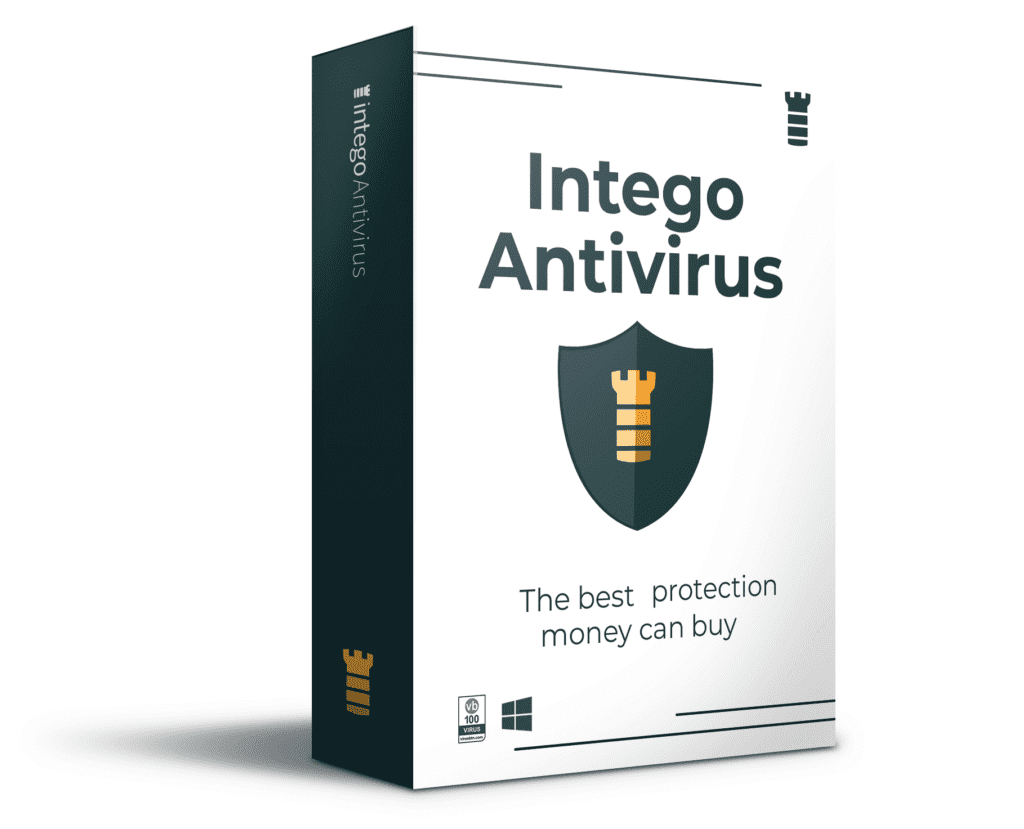
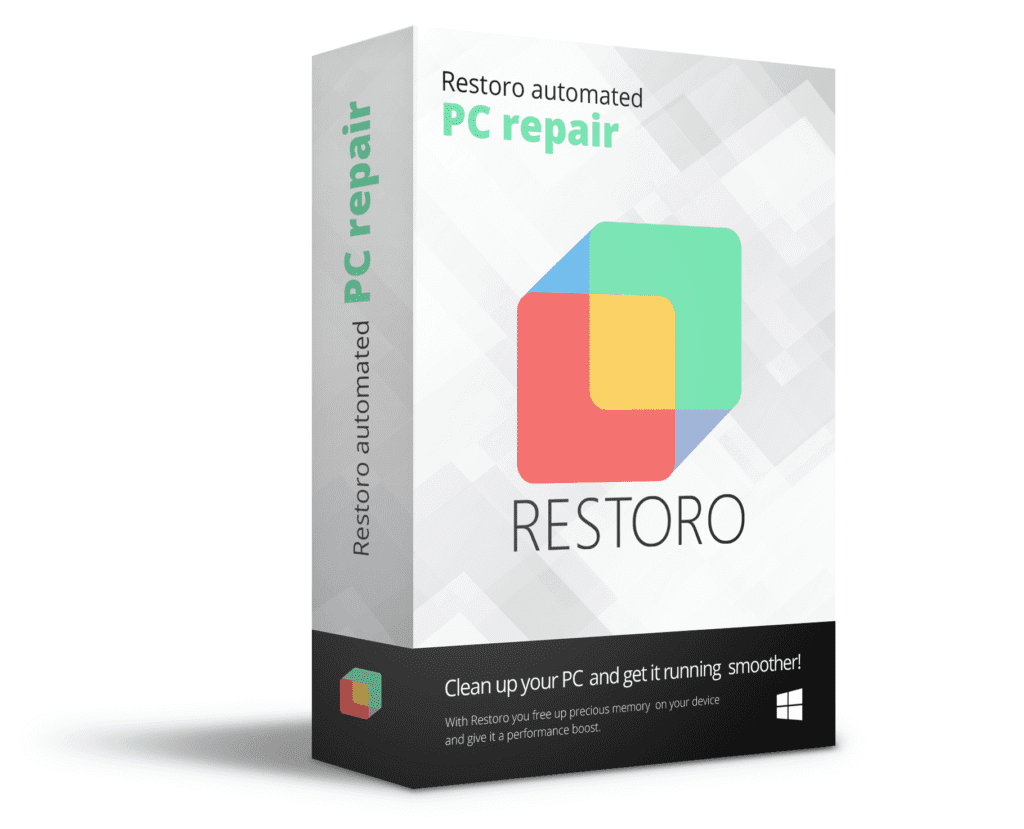
Leave a Reply